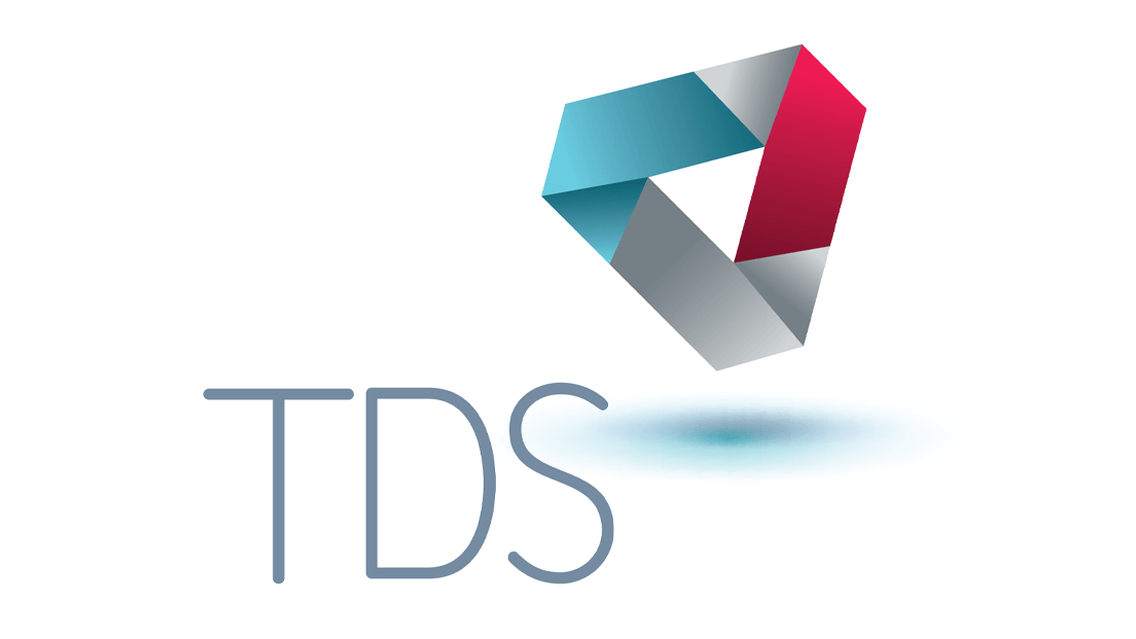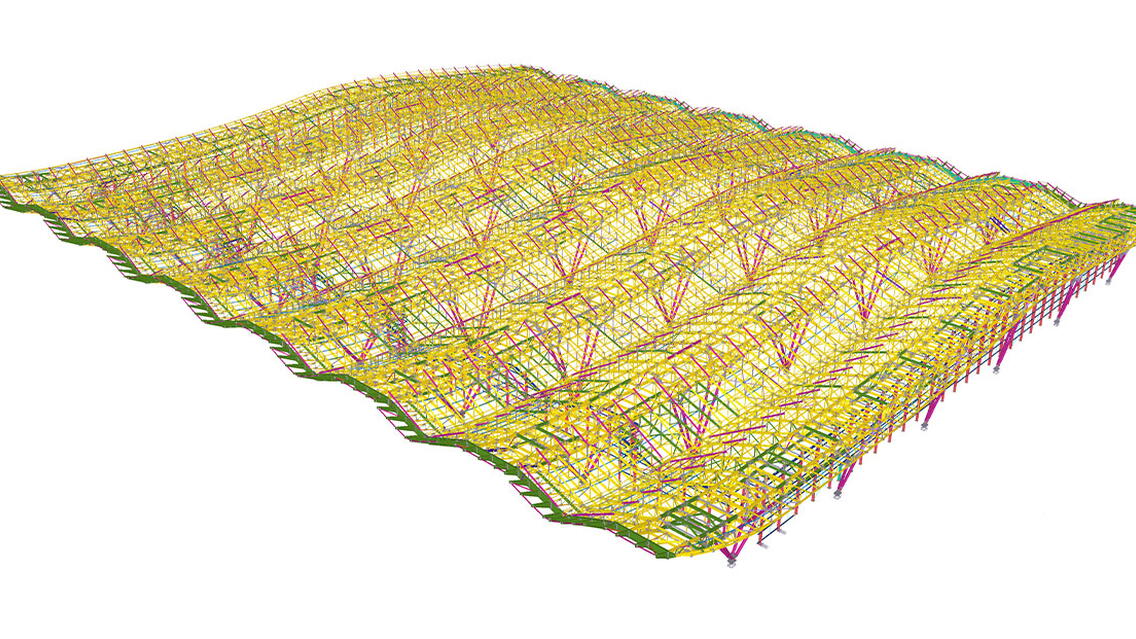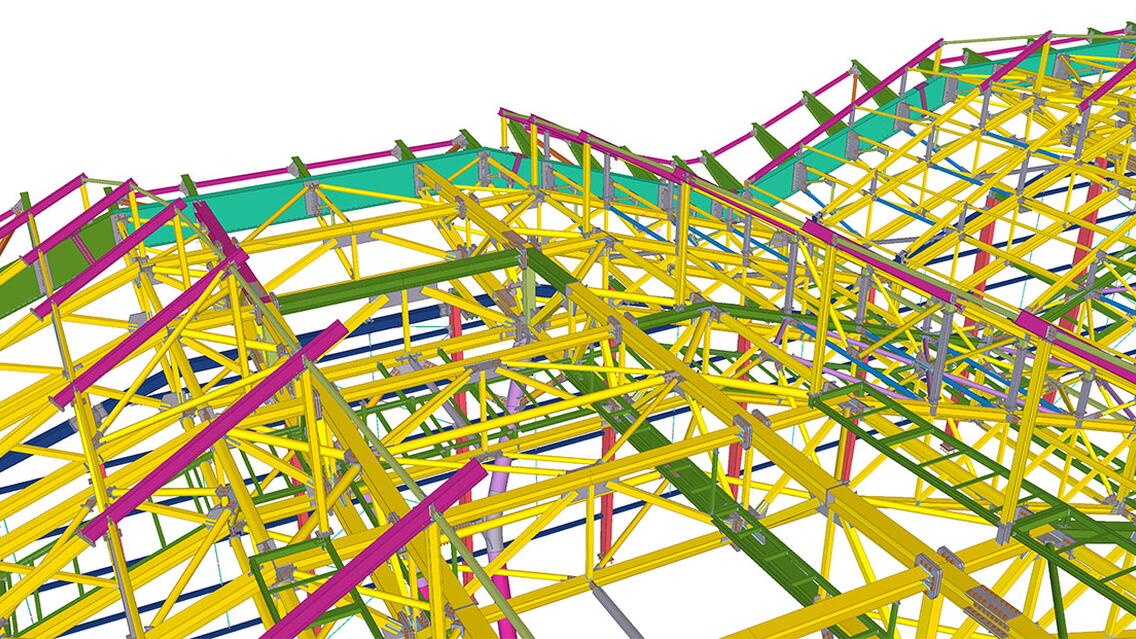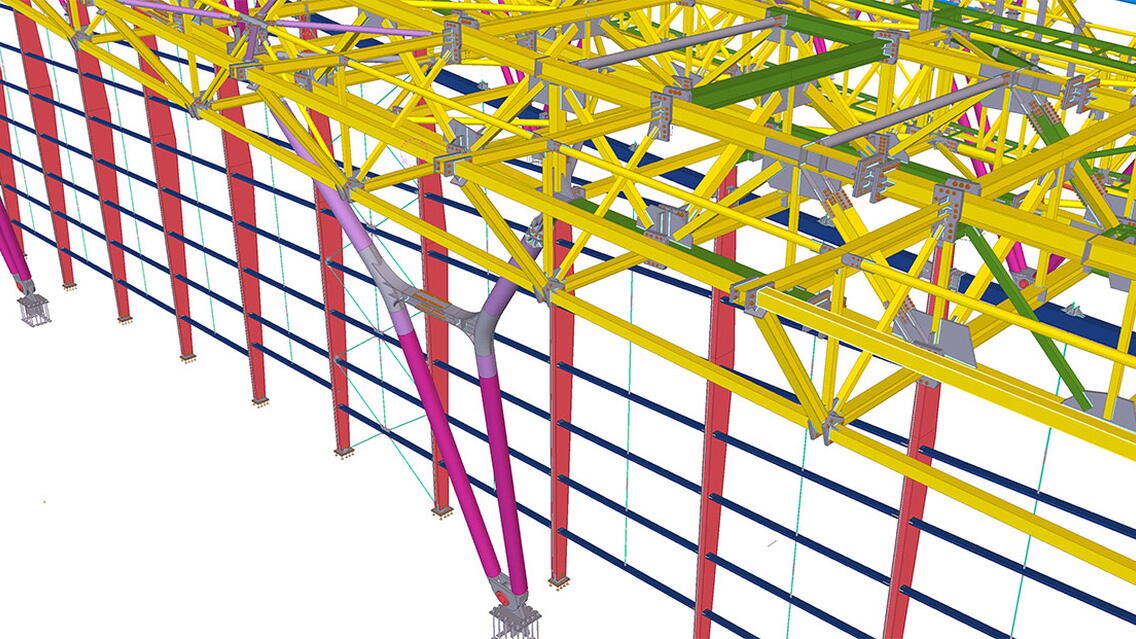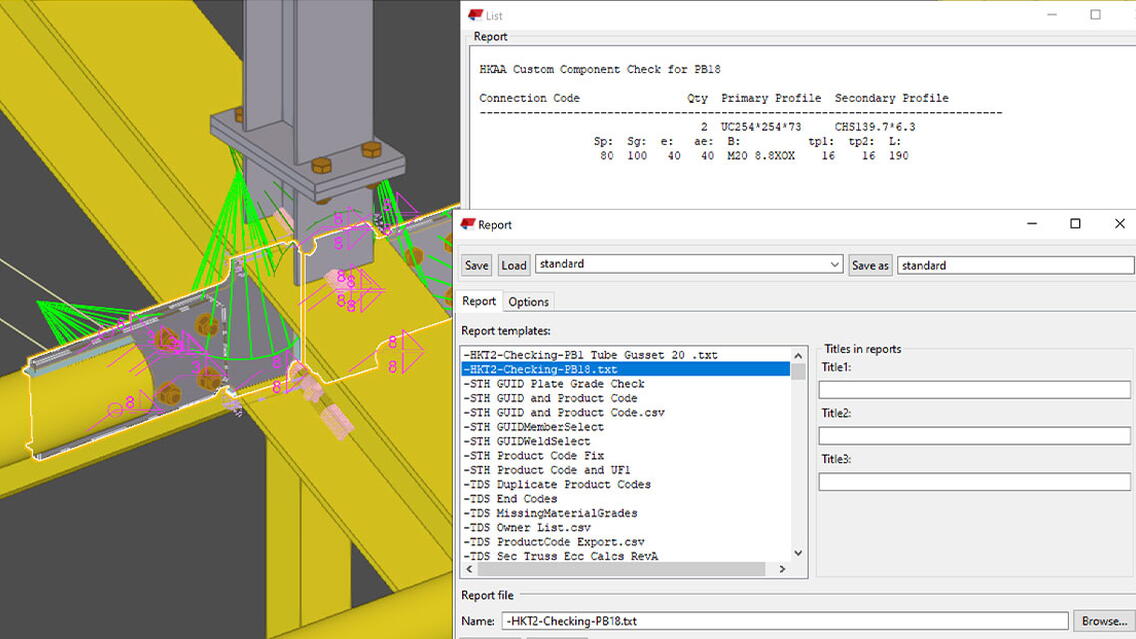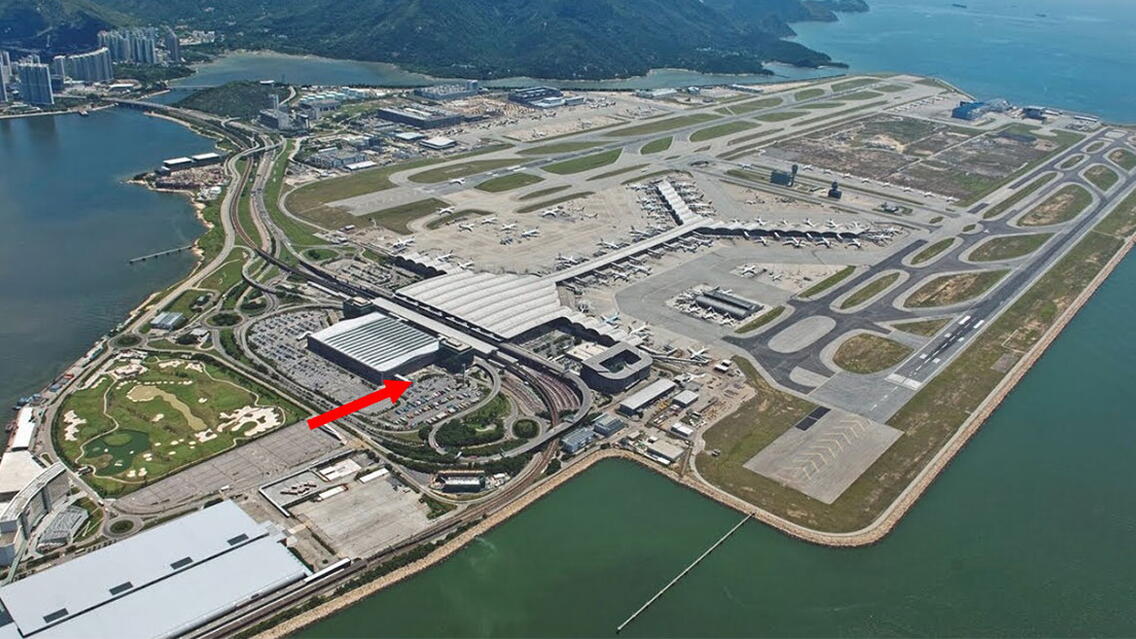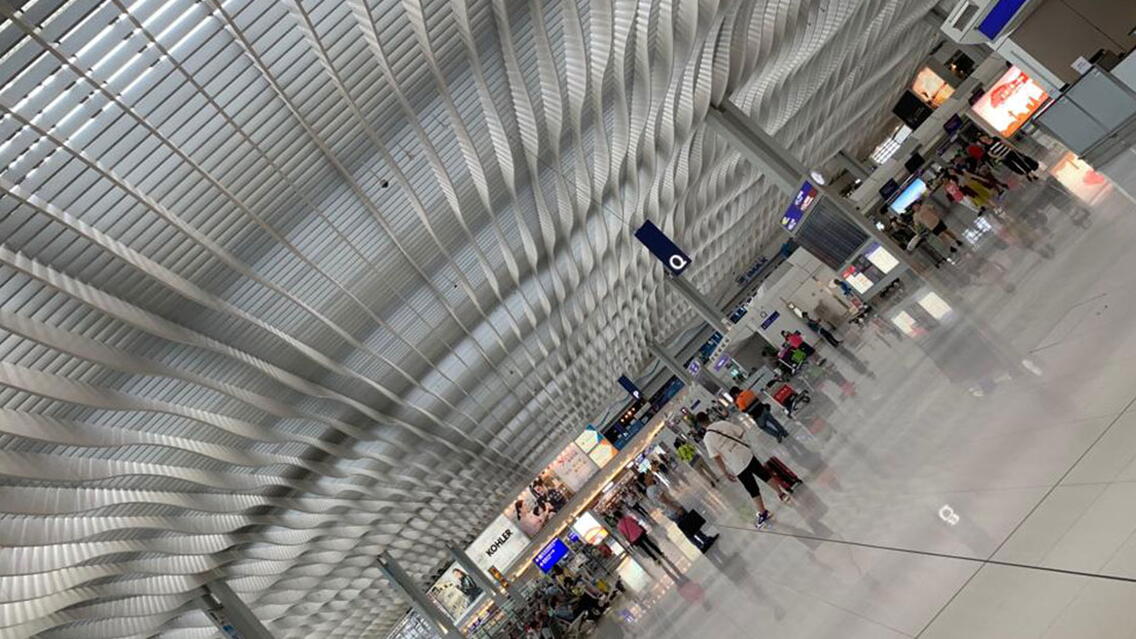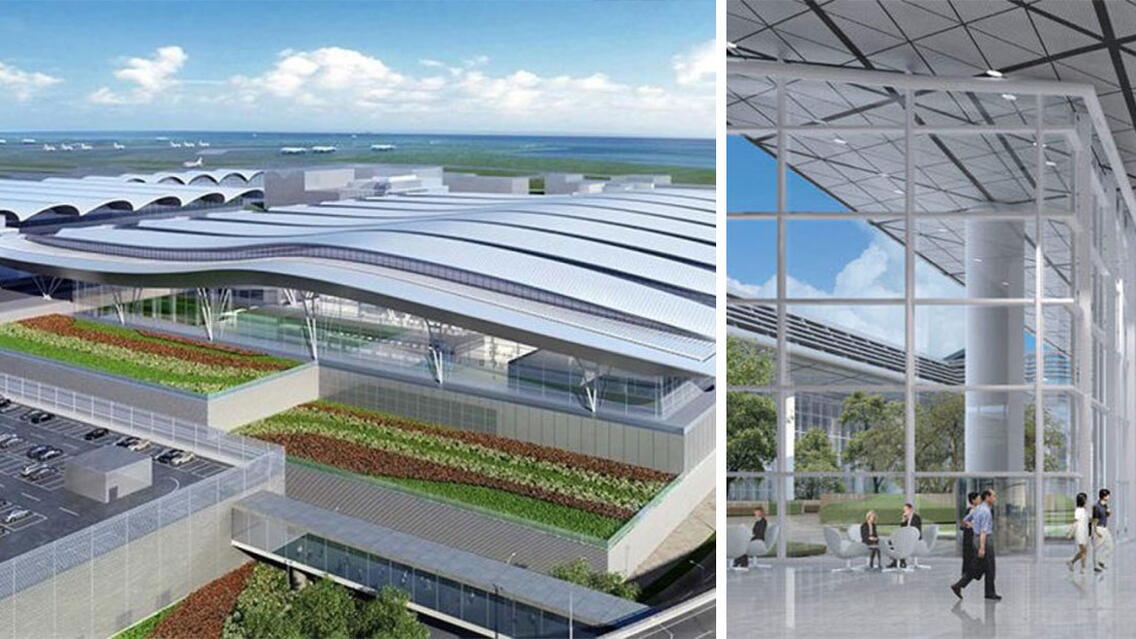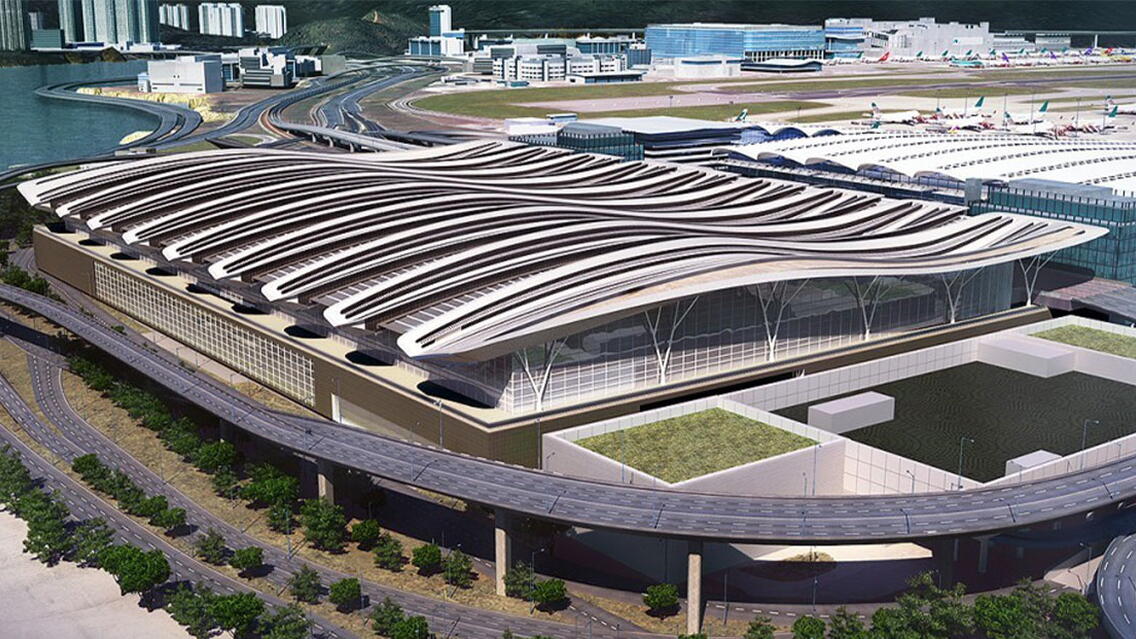Our remit was to provide a fully connected, data-rich Tekla model of the new Terminal 2 building for Hong Kong International Airport. The model was formed of the main roof structure as well as a full-perimeter facade wall structure and thousands of metres of internal walkway frames suspended/fixed to the main roof elements.
What made the project special?
This project had numerous unique and special characteristics that make it stand out from the norm. The first of which was the basis of the contract. TDS were employed as a detailed design and fabrication consultant by the Hong Kong Airport Authority to work alongside the principal engineer, AECOM UK, who were developing their structural models and design at the time of our appointment. This meant that the Tekla model creation and development ran concurrently with the structural design, which is a very unique way of working within our industry. Typically, the structural design is complete at the point where detailing commences, but it was a specific requirement of this project that the two tasks ran side by side and were intertwined. This was due to the complex geometry of the roof structure itself. The structural design could not be completed to a sufficient level of detail without a working Tekla model and vice versa, as it would only be at the moment that objects were modelled in Tekla that it would become apparent that theoretical principles didn't work. Some connections were so complex that they could not be designed until the relevant members had been modelled in Tekla and all additional setting out rules applied, due to the eccentricities and complexities induced by the shape of the roof and the sheer number of members involved.
What were the challenges and what made the project successful?
There were many challenges on this project. As mentioned above, the constantly changing structural design made connecting works extremely difficult. It requires a different mindset than typical to be able to model connections to objects you know are susceptible to change at any time, almost certainly more than once. Sometimes even simply modelling the connection would require changes to the structural design as until it all comes together, it's difficult to know what will work. Established boundaries for connections need to adapt to those changes too so frequently minimum weld sizes, bolt sizes etc would change when they were previously agreed and fixed. However, this was part and parcel of the unique nature of this contract and something we knew to expect. It was, by nature, a fluid design process and it needed to be.
The project in numbers
This roof structure was formed of 11,750t of steelwork giving a total of over 30,000 steel assemblies including 16x waveform primary trusses (measuring 223m in length each), 984x secondary trusses and over 12,000 individual braces.
The building measured over 270m in length, 230m in width and a maximum height of 37m.
In addition to this, the roof structure housed 8,500m of high level walkways and platforms totalling 715t in mass, as well as 943m of facade wall structure formed of over 1000 transom beams and nearly 200 tapered, plated mullions, adding a further 700t to the mass of the structure.
At its peak, the project team consisted of 14 full time members of staff and ran over nearly two years.
